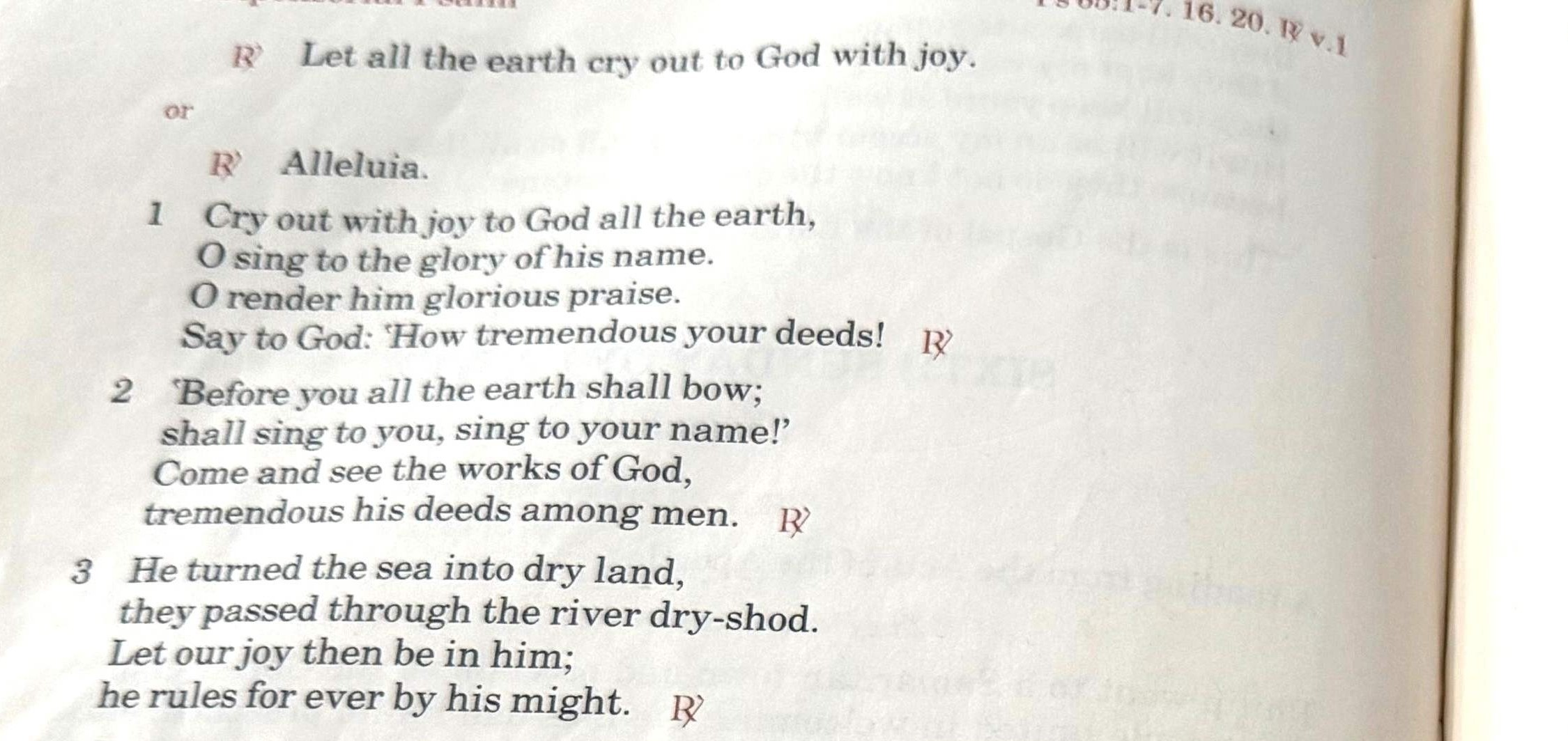The First Reading and Responsorial Psalm
National Liturgical Council

The Lectionary
The book containing the readings, psalms, and gospel acclamations for our liturgical rites is called the Lectionary. It is currently in three volumes and covers all Sundays, Seasons, Sacramental Rites, Saints’ Days, Particular Needs or Occasions (church and civic), and the Masses for the Dead. So as you can see, there are scripture readings for almost every liturgical occasion imaginable.
The First Reading
Every Sunday except during the Easter season, the First Reading comes from the Hebrew Scriptures (Old Testament). For many centuries, these books of the Bible were hardly ever proclaimed in Catholic liturgies. This was a real impoverishment for the Church. Since Vatican II, we now have enough Old Testament readings to fill a three-year Sunday cycle and many weekdays as well!
Our only way of meeting God in this part of the Mass is by listening to the readings.
Despite how hard we listen, the First Reading might sometimes seem quite remote from our experience and thus difficult to understand. It therefore helps if some time before the actual Sunday celebration, we reflect on the readings, beginning not with the First Reading but with the Gospel. That is because the First Reading is chosen for its harmony with the Gospel of the Sunday, its purpose being to foreshadow the Gospel.
Another way of better understanding the First Reading is to go to a Commentary. A very user-friendly version is "Break Open the Word", published each year by the Brisbane Liturgical Commission. Every reader would find this a valuable resource for preparing the Sunday readings.
The Word of the Lord
According to the original Latin, the correct translation of the conclusion of the First and Second Reading is “The Word of the Lord.” This form is now in line with the Communion formula “The Body of Christ.”
Responsorial Psalm
The Responsorial Psalm has been restored once again as an integral part of the liturgy.
Having heard God’s word in the First Reading, the assembly is now ready to respond with a psalm that reflects it. The psalms are normally to be sung since they are the hymns of Israel.
This can be done in a variety of ways. The usual form is for a cantor (soloist) to sing the verses and the assembly to sing the refrain.
Singing not only adds a special dimension to the psalm itself, but brings contrast into the Liturgy of the Word, since we already have a lot of spoken words in this part of the Mass. It also helps to highlight the difference between God’s word and our response.
The psalm may either be the psalm of the day or a seasonal psalm sung over several weeks. The idea behind this is to encourage everyone to sing. Even if the psalm verses cannot be sung by a cantor, parishes should try to introduce a sung response to balance the reciting of the verses. Like the psalm, the sung response can also be seasonal rather than having to sing a new one each week.
Because the psalm is part of the Liturgy of the Word, it may be sung or recited from the place that the readings are proclaimed, i.e. the lectern (or ambo). The ambo is the table of God’s word, and is therefore used only for the readings, the homily, the psalm and the intercessions, which flow out of the readings of the day.
This article was originally published in Let’s Walk Through The Mass. © Diocese of Parramatta. 1999, 2000, 2007. Reprinted with permission.
